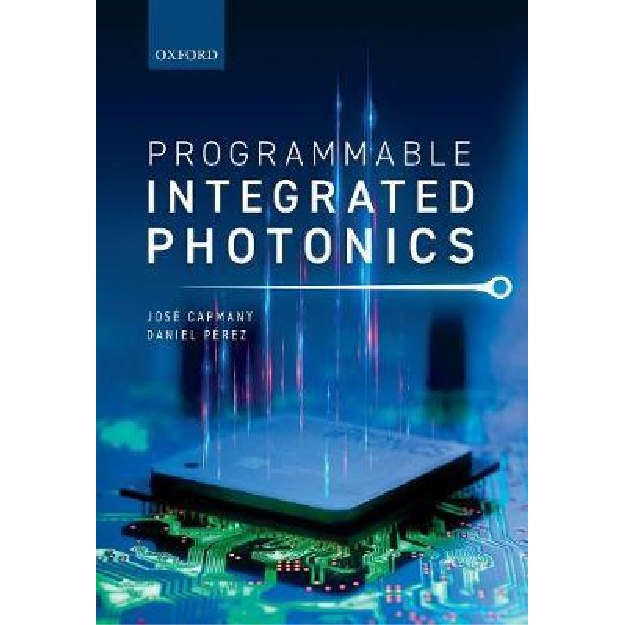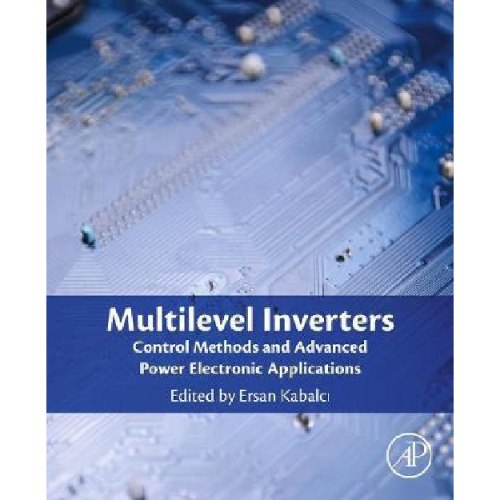Programmable Integrated Photonics
9780198844402
-
₪448.00₪596.00
אזל המלאי
פריט זה ניתן על ידי קרדיטים.
לחצו על "הוספה לעגלה" להמשך
לחצו על "הוספה לעגלה" להמשך
אזל המלאי עבור /
-
זמן אספקה ותנאי רכישההערות:
• זמן אספקה: הזמנות בהן כל הספרים זמינים במלאי - זמן אספקה – כ- 5 ימי עסקים (למעט אזורים חריגים בהם ייתכן עיכוב נוסף).
ספרים שאינם זמינים במלאי: זמן אספקה כ- 14 -45 ימי עסקים בהתאם למלאי במחסני המו"ל בחו"ל - הודעה תימסר ללקוח.
• הזמנה במשקל כולל של עד 14 קילו ישלחו ללקוח באמצעות חברת שליחויות עם שליח עד הבית (בישובים מסוימים המסירה תתבצע למרכז חלוקת הדואר המקומי)
• במידה וקיים עיכוב במשלוח ההזמנה או חוסר במלאי הספרים תשלח הודעה ללקוח.
• במידה ויבחר הלקוח עקב עיכוב במשלוח כנ"ל לבטל הזמנתו ויודיע על כך לידע, ידע מתחייבת לזכות החיוב.
• במידה ויתברר כי הספרים אזלו מהמלאי ולא ניתן לספקם - תשלח הודעה ללקוח.
• האיסוף העצמי ממשרדי ידע יבוצע רק לאחר הודעה ללקוח שההזמנה מוכנה לאיסוף.
דמי משלוח:
ניתן לבחור: 1. איסוף עצמי - ללא תשלום
2. משלוח עד הבית
2020
This book provides the first comprehensive, up-to-date and self-contained introduction to the emergent field of Programmable Integrated Photonics (PIP). It covers both theoretical and practical aspects, ranging from basic technologies and the building of photonic component blocks, to design alternatives and principles of complex programmable photonic circuits, their limiting factors, techniques for characterization and performance monitoring/control, and their
salient applications both in the classical as well as in the quantum information fields. The book concentrates and focuses mainly on the distinctive features of programmable photonics, as compared to more traditional ASPIC approaches.
After some years during which the Application Specific Photonic Integrated Circuit (ASPIC) paradigm completely dominated the field of integrated optics, there has been an increasing interest in PIP. The rising interest in PIP is justified by the surge in a number of emerging applications that call for true flexibility and reconfigurability, as well as low-cost, compact, and low-power consuming devices.
Programmable Integrated Photonics is a new paradigm that aims at designing common integrated optical hardware configurations, which by suitable programming, can implement a variety of functionalities. These in turn can be exploited as basic operations in many application fields. Programmability enables, by means of external control signals, both chip reconfiguration for multifunction operation, as well as chip stabilization against non-ideal operations due to fluctuations in environmental
conditions and fabrication errors. Programming also allows for the activation of parts of the chip, which are not essential for the implementation of a given functionality, but can be of help in reducing noise levels through the diversion of undesired reflections.
This book provides the first comprehensive, up-to-date and self-contained introduction to the emergent field of Programmable Integrated Photonics (PIP). It covers both theoretical and practical aspects, ranging from basic technologies and the building of photonic component blocks, to design alternatives and principles of complex programmable photonic circuits, their limiting factors, techniques for characterization and performance monitoring/control, and their
salient applications both in the classical as well as in the quantum information fields. The book concentrates and focuses mainly on the distinctive features of programmable photonics, as compared to more traditional ASPIC approaches.
After some years during which the Application Specific Photonic Integrated Circuit (ASPIC) paradigm completely dominated the field of integrated optics, there has been an increasing interest in PIP. The rising interest in PIP is justified by the surge in a number of emerging applications that call for true flexibility and reconfigurability, as well as low-cost, compact, and low-power consuming devices.
Programmable Integrated Photonics is a new paradigm that aims at designing common integrated optical hardware configurations, which by suitable programming, can implement a variety of functionalities. These in turn can be exploited as basic operations in many application fields. Programmability enables, by means of external control signals, both chip reconfiguration for multifunction operation, as well as chip stabilization against non-ideal operations due to fluctuations in environmental
conditions and fabrication errors. Programming also allows for the activation of parts of the chip, which are not essential for the implementation of a given functionality, but can be of help in reducing noise levels through the diversion of undesired reflections.
מוצרים קשורים
-
יח'יח'יח'יח'
תודה על השיתוף
קיבלתם הנחת שיתוף מיוחדת! על מנת להינות מהנחה זו עליכם להוסיף את הפריט לעגלת הקניות בכפתור הוספה לעגלה.
הצטרפו לרשימת המתנה לחזרה למלאי
הצטרפות לרשימת ההמתנה בוצעה בהצלחה.
אנו נשלח אליכם מייל כאשר הפריט יחזור למלאי.





